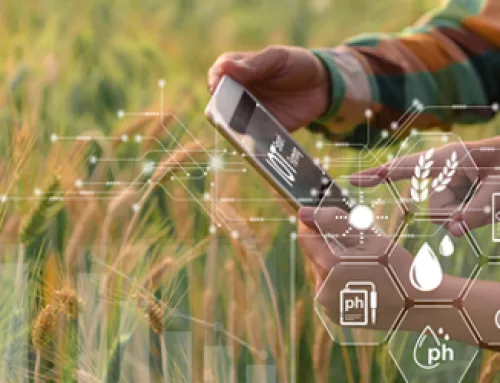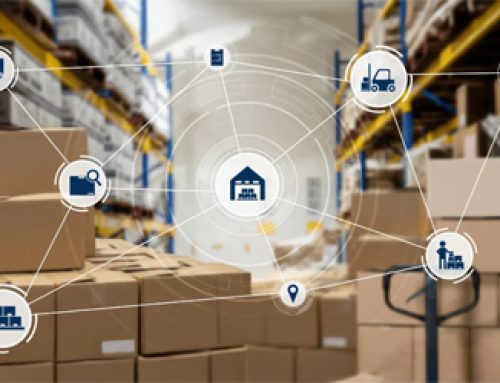Maximising Crop Yield: The Benefits of Crop Management Software for Farmers and Agribusinesses
Agriculture has always been a cornerstone of human civilisation, feeding the world and driving economies. However, with the challenges of a growing global population, changing climates, and resource constraints, farmers and agribusinesses face increasing pressure to maximise their crop yields. The advent of crop management software has, however, revolutionised modern farming by enabling precision, efficiency, and sustainability.
This blog explores the transformative potential of crop management software, detailing how its advanced features like precision planning, pest and disease monitoring, and irrigation optimisation are empowering farmers and agribusinesses to increase yields, reduce waste, and improve profitability.
The Benefits of Crop Management Software
1. Precision Planning: Setting the Stage for Success
Effective farming begins with proper planning. Crop management software assists farmers by consolidating operational data, enabling them to organise and allocate resources effectively. By using this information, farmers can effectively optimise their strategies and planning processes.
Benefits:
- Improved resource management.
- Enhanced operational efficiency.
- Reduced risks associated with overuse or underuse of inputs.
2. Real-Time Crop Monitoring: Staying One Step Ahead
One of the standout features of crop management software is its ability to provide real-time crop monitoring. By leveraging IoT sensors, drones, and satellite imagery, farmers and agribusinesses can gain an accurate picture of their fields’ health without stepping outside.
This continuous monitoring enables the early detection of issues like nutrient deficiencies, water stress, or pest infestations. Farmers and agribusinesses can then take corrective actions promptly, minimising damage and ensuring optimal growth conditions.
Benefits:
- Proactive problem-solving.
- Reduced reliance on manual inspections.
- Enhanced crop health and yield.
3. Pest and Disease Management: Protecting the Harvest
Pests and diseases are among the most significant threats to crop yield, capable of wiping out entire fields if left unchecked. Traditional pest management methods, such as broad-spectrum pesticides, are often inefficient and harmful to the environment.
Crop management software offers a smarter alternative. By analysing weather patterns, crop types, and pest behaviour, it can predict potential outbreaks and suggest targeted interventions. Farmers and agribusinesses can use this information to apply precise treatments, reducing chemical usage and costs.
Benefits:
- Early detection of pest and disease risks.
- Reduced chemical dependency and environmental impact.
- Protection of crops without unnecessary expenses.
4. Irrigation Optimisation: Maximising Water Efficiency
Water is a vital resource in farming, yet it’s often wasted due to over-irrigation or poor planning. Crop management software addresses this challenge by providing tools to monitor soil moisture levels and predict water requirements based on crop growth stages and weather forecasts.
Advanced systems can even automate irrigation schedules, ensuring crops receive just the right amount of water at the right time. This not only conserves water but also enhances crop quality and yield.
Benefits:
- Reduced water wastage.
- Improved soil moisture and growth.
- Lower energy costs for irrigation systems.
5. Resource Allocation and Waste Reduction
Efficient resource use is crucial for maximising profitability. Crop management software helps farmers and agribusinesses allocate resources—seeds, fertilisers, water, and labour—more effectively. By tracking inputs and outputs, agribusinesses can identify areas of inefficiency and implement improvements.
For example, a farmer might discover that one section of their field consistently underperforms due to poor soil quality. The software can suggest solutions such as targeted fertilisation or crop rotation, reducing waste and improving output.
Benefits:
- Optimal use of resources.
- Reduced operational costs.
- Increased return on investment (ROI).
6. Data-Driven Decision Making: Empowering Farmers and Agribusinesses
In agriculture, knowledge is power. Crop management software collects vast amounts of data, from weather forecasts and soil conditions to market trends and pest activity. By analysing this data, the software provides actionable insights that enable smarter decision-making.
For instance, if a farmer notices that a particular crop consistently yields lower profits, they can switch to a more lucrative alternative based on market demand. Similarly, real-time weather updates can guide planting and harvesting schedules, reducing the risk of losses.
Benefits:
- Informed and confident decision-making.
- Improved risk management.
- Greater adaptability to changing conditions.
7. Integration with Farm Management Systems
Many crop management software solutions integrate seamlessly with broader farm management systems, providing a holistic view of operations. This integration allows farmers and agribusinesses to manage finances, track equipment usage, and monitor supply chains alongside crop performance.
Such a comprehensive approach ensures that every aspect of the farm works in harmony, maximising efficiency and profitability.
Benefits:
- Centralised management of farm operations.
- Improved coordination across teams.
- Enhanced operational transparency.
Overcoming Challenges in Adoption
While the benefits of crop management software are clear, some farmers and agribusinesses face challenges in adopting this technology, including:
- Cost: Initial investments in software and equipment can be high.
- Technical Expertise: Not all farmers and agribusinesses are comfortable with digital tools.
- Internet Access: Rural areas may lack reliable internet connectivity.
To address these challenges, governments and agricultural organisations are offering subsidies, training programs, and offline solutions to make crop management software more accessible.
Conclusion
Maximising crop yield is no longer about working harder—it’s about working smarter. Crop management software empowers farmers and agribusinesses with the tools and insights they need to optimise operations, protect their harvests, and achieve sustainable growth.
By leveraging precision planning, real-time monitoring, pest and disease management, irrigation optimisation, and data-driven decision-making, agribusinesses can unlock the full potential of their fields.
As the agricultural landscape continues to evolve, adopting crop management software is not just an option but a necessity for staying competitive. With the right tools, farmers and agribusinesses can not only maximise yields but also secure a prosperous future for themselves and the planet.
Ready to unlock the benefits of crop management software? Get in touch with us to know how crop management software can transform your farming operations!



